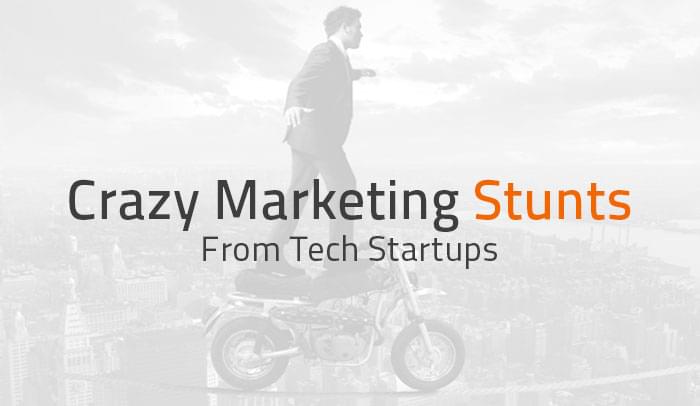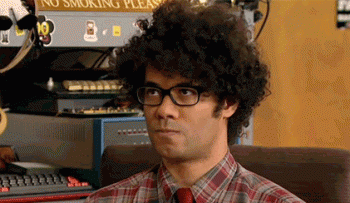PR stunts are nothing new. Way back in 1896, William Crush of the Missouri-Kansas-Texas Railroad put together a rather insane publicity stunt when he turned an empty spot of desert into “Crush City” for one day, promising the spectacle of a violent train crash. He painted one engine red, and the other green, and sent them on a tour of major cities months in advance of the event. Over 40,000 people showed up to gawk on the day, which was considered a huge success — until the trains’ boilers exploded on impact, killing several spectators and injuring many more.
Modern marketing stunts tend to be held to much higher health-and-safety standards, but they remain unpredictable by nature. Even the most carefully conceived stunt can have unintended consequences. But when they work, they really work. Here’s a list of our 10 favorite marking stunts by tech startups. Some of them were a smash success, others not so much, but they all have lessons for us.
1. Dude, who clamped my car?!
- The Start-Up:
ParkMe, a parking reservation app. The app lets people find and pre-book parking spots in major cities, giving recommendations for the nearest, cheapest parking available. - The Stunt:
It was a risky move. Nothing gets your blood pumping and temper rising faster than coming out to find that your car has fallen victim to the merciless clampers. And that’s just what happened to hundreds of drivers at the SXSW convention in Austin, Texas in 2012, or so it seemed. Every car in the downtown area was “clamped” with a bright orange cardboard boot, emblazoned with a URL and hashtag promoting ParkMe. They also left fake parking tickets (with a free quarter for parking) on car windows. - The Aftermath:
From a distance, the prank was quite convincing, and could have backfired. Inciting a negative emotion in marketing is always a gamble, but the relief of realizing it wasn’t real seemed to cancel out any short-lived annoyance. Perhaps the free quarter sweetened the deal. Overall the reaction was positive, with lots of laughs and a brief but intense flurry of Tweets. They made the Austin TV news and a number of tech and mobile app blogs, generating a lot of publicity for a relatively small investment: just printing costs and a few rolls of quarters. ParkMe put together a video of the whole thing, so you can see how it was done and what an impressive effect it created.
2. A town called Half.com
- The Start-Up:
Half.com, an early eCommerce site, which allows seller to offer new and used fixed-price goods such as books, DVDs, and video games. - The Stunt:
Way back in 1999, at the height of the raging dotcom boom, it took something extraordinary to stand out from the crowd. This company decided that the only way to go would be to literally put themselves on the map. The founders of Half.com looked up every place in America with the word “half” in the name, before finally settling on the little town of Halfway, Oregon, (population 360.) It couldn’t have been more perfect. Halfway between the equator and the North Pole, and hard up for cash. They offered the town $100,000, 20 computers, and a free website, if they would change their name to Half.com for one year. Halfway accepted, and posted two signs saying “Welcome to Half.com, Oregon, America’s First Dot-com City. - The Aftermath:
The media instantly went crazy for the story, and the stunt was successful beyond anyone’s wildest dreams. The media storm was intense, and the result has gone down in history (and marketing textbooks) as one of the most incredible marketing stunts of all time. 20 days after the launch, eBay came calling. Five months after the IPO, they bought Half.com for more than $300m.
3. Steal my identity, please!
- The Start-Up:
Lifelock, an online identity protection company, which offers security services and software to safeguard against identity theft and fraud. - The Stunt:
You have to admit it was audacious. Beginning in 2006, new Lifelock CEO Todd Davis challenged America to steal his identity, claiming that his belief in the product was absolute. In a series of TV commercials, print advertisements in major magazines, giant billboards, rampant online ads, and the side of a tractor trailer, he displayed his social security number and his dare: “No, I’m not crazy, I’m just sure our system works. People responded immediately to the brave claims, and more than a million people signed up for the service in the wake of the campaign. Money from investors continued to pour in, and the company looked to be going from strength to strength. - The Aftermath:
This one’s a cautionary tale. You could argue that all publicity is good publicity, but this case really tests that theory. The stunt attracted great media attention, and at first it looked like a coup. But the facade began to crumble fairly quickly. By 2008, the New York Times reported that Davis had suffered identity theft at least once. In another two years, that number had risen to 13, with fairly substantial fraud committed by identity thieves around the country. That was only the beginning of Lifelock’s problem. The company was plagued by various lawsuits from all sides, but the biggest flow came when the Federal Trade Commission charged them with false advertising. $12 million in fines later, the company’s reputation and stock seemed to be in tatters. Amazingly, Lifelock is still around. It’s made some changes, but it’s still dealing with constant legal woes, and Todd Davis is still the CEO.
4. Marching to the beat of their own drummer.
- The Start-Up:
Huddle, a cloud sharing and collaboration startup. In its early days, it received a lot of attention and nurturing from Microsoft. It was selected as a Microsoft Bizspark One partner in 2009, and in 2010, won the top award at Microsoft’s Socialfest conference. - The Stunt:
Despite Huddle’s close ties with Microsoft, their product is a direct competitor of the tech giant’s Sharepoint. In 2011, they decided to make a strong statement by showing up at Microsoft’s huge Sharepoint convention in Anaheim, California. They put together an enormous pep rally, including a marching band and cheerleaders, all bearing Huddle’s logo. 130 people in total marched up to the front of the venue, causing much confusion and amusement. As the purpose of the stunt became clear to conference organizers, they moved to shut it down, sending in security, and ultimately the police. Huddle cleared up, but reappeared, band and all, right in time for the lunchbreak. - The Aftermath:
The stunt garnered a good deal of press. The response was generally positive, with commentators tickled by the combative nature of the whole thing. There’s nothing like a soap opera whiff of betrayal, drama, and a good old David and Goliath theme to get tongues wagging. One exception was Microsoft’s blog, which mentioned the incident dismissively as “cheap”. Huddle, originally a UK company, has continued to grow exponentially, with presence on both US coasts, a steady flow of investment, and an ever-increasing market share. They have continued to stay in the news and thumb their nose at Microsoft publicly, staging further stunts, including large mocking billboards outside the offices of Yammer when it was acquired by Microsoft in 2012.
5. Buy me a pony!
- The Start-Up:
Groupon, the online coupon giant. Launched in 2008, it saw meteoric growth, but has had its share of stumbles. - The Stunt:
Andrew Mason, the young CEO of Groupon, made a habit of strange stunts and wacky behavior throughout his time with the company. But the craziest stunt of all must have been the time he (almost) gave the mayor of New York, Michael Bloomberg, a real live pony. The spotted equine, named Spice, was ushered into Groupon’s lobby with a big green bow around its neck, according to Vanity Fair Magazine, which profiled the CEO in 2011. Just minutes before the mayor was due to arrive, Groupon’s head of PR, Julie Mossler, Googled “Bloomberg horse” and discovered that his daughter, Georgina (a professional show-jumper), had recently suffered a riding accident that resulted in a concussion and a fractured spine. Within minutes, Spice was hidden away in a freight elevator for the duration of the visit. - The Aftermath:
Quick thinking on the part of Mossler probably saved Mason and Groupon from some seriously embarrassing press. By the time the story came out, it was chalked up to just another stupid Mason prank. The press never knew whether to find these incidents endearing or annoying, but either way this behavior consistently resulted in column inches, and the public seemed to enjoy the show. At least, they did until Andrew Mason was fired as CEO in 2013, after some bad decisions and startling losses. Now the pony affair remains a stalwart on the (admittedly long) list of “Weird Things Andrew Mason Did,” alongside “Offensive Super Bowl Commercial” and “Christmas Underwear Yoga Youtube Video.” Now that these antics are in the past, Groupon’s not in the news as often, but its profits are stronger than ever.
6. Car champions, parking protectors, fine fighters!
- The Start-Up:
Fixed, an app designed to help people fight parking tickets. You take a photo of your ticket, send it to Fixed, and if they can get it reversed, you pay 25% of the proposed fine. Contesting is free. - The Stunt:
It’s almost hard to call this one a stunt, as it seems to be a genuine business strategy. Still, it’s unexpected. Fixed actually pays a troupe of “Ticket Heroes” who take to the streets of San Francisco in search of unfortunate car owners. When a Ticket Hero spies a ticket on a windscreen or a despondent driver swearing over a fine, they immediately offer compassion, cookies, and an introduction to the Fixed app. The job description says: “You will be responsible for bringing Ticket Justice to the street. It’s exactly like a superhero but less cape and more App.” - The Aftermath:
Generating good karma and positioning your company as hilarious, do-gooding sweethearts is a pretty nice PR move. The novelty of their service and the fun way they go about it seems to be a large part of the serious press they’ve been getting, from CNN, NPR, Business Insider, and all the major networks. It’s a great hook for any story. The company is brand new, launching in January of 2014. Their seed capital round was oversubscribed, garnering $1.2 million from major investors. They have 35,000 subscribers and a gigantic waiting list. (A pretty smart stunt on the side? You can jump to the top of the list if you share the app on Facebook.)
7. The internet is for kittens.
- The Start-Up:
Uber, a transportation networking app. Founded in 2009, they have faced considerable opposition from regulatory bodies but remains popular with both drivers and users. - The Stunt:
To celebrate National Cat Day, Uber teamed up with internet superstars I Can Haz Cheeseburger to offer “Kitten Delivery” in NYC, San Francisco, and Seattle. On October 29th, 2013, the app displayed a special button which allowed users to request “Kitten Delivery.” For $20, an Uber driver would drop kittens, shelter volunteers, and special cupcakes off to your doorstep for 15 minutes of cuddles and playtime. All proceeds went directly to local humane societies, and if users fell in love with those furry little faces, they also had the option to adopt, pending the usual background checks. - The Aftermath:
The public response was massive, and the whole thing went viral at the twitch of a whisker. Demand outstripped supply to the point where news outlets were reporting a “Cat Shortage” emergency. Over and over again, Uber has proved itself to be a PR machine, offering “surprise and delight” campaigns which range from offering rides in a Back to The Future Delorean, helicopters to the Hamptons, Christmas tree delivery, or ice-cream trucks on demand. They know how to set an emotional hook, and they are media darlings as a result. Possibly more importantly, they can manufacture the kind of social-media friendly moments which get the public talking.
8. Internet intelligence quotient.
- The Start-Up:
Atcheap.com, a now defunct price comparison website startup. - The Stunt:
In 2011, when Tarandeep Gill, a developer from Vancouver, Canada, was building his website, he was frustrated by the difficulties of getting compatibility with old versions of Microsoft Internet Explorer which still accounted for a large part of the market share. In a fit of pique (and genius) he had the idea to create a faked research study, correlating IQ with choice of web browser. He set up a fake research company, Aptiquant, and released his “results” in a formal press release, which claimed that IE users were significantly stupider than the users of Chrome, Firefox, and other browsers. - The Aftermath:
The press release pulled in an astounding amount of international press attention, with respected news sources such as the BBC, Forbes, PC Magazine and many more reporting on the study without realizing it was a total hoax. In interviews, Gill posed as a “researcher” from Aptiquant. Within a week, the hoax was uncovered. Some people were deeply irritated at having been fooled, but for the most part the internet enjoyed the joke. Gill gave another round of interviews, this time as himself. He claimed that the purpose of the prank was to call attention to the problem of outdated web-browsers, and said he was shocked at how far it had gone. The marketing side of things was not neglected, however Atcheap.com got many mentions when Gill pointed out that he’d left the URL in the footer of the “Aptiquant” website as a clue. It’s unclear what happened to the shopping comparison website, but Gill has moved on to other projects.
9. Mark Zuckerberg x 2.
- The Start-Up:
LikeStore, an Israel-based defunct marketing startup which allowed brands to buy “likes” on Facebook. - The Stunt:
To understand this one, you need a bit of background. The entrepreneur who started LikeStore was born Rotem Guez. Though fake Facebook likes are strictly against the Terms of Service, buying and selling clicks is a lucrative “black hat” marketing business which experts say could be worth $200 million a year. LikeStore tried to edge in on the market, but was fingered by Facebook, which banned the owner from the site for life and threatened legal action. Guez’s reaction had Facebook seeing double (and no, we don’t mean the Winklevoss twins.) In a bizarre act of defiance, Guez had his name legally changed to Mark Zuckerberg. “If you sue me, you’ll have to sue Mark Zuckerberg!” - The Aftermath:
If Mark Zuckerberg II wanted attention, he certainly got it. The name change was hailed immediately as a brilliant, if insane, marketing stunt. Every major news, tech, and gossip outlet got a kick out of the story, and he was even named Time Magazine’s “Troll of The Year 2011”. Facebook was not amused or daunted, and another cease and desist letter, landed on his doorstep. After the huge wave of chatter, everything fell quiet. On a personal website, the new Mark Zuckerberg lays out a timeline of the dispute, which ends with “negotiation” in September, 2012. After this, no trace of an update seems to exist: the only clue is that LikeStore’s website is now defunct, the domain for sale. The latest activity associated with this crazy episode exists, ironically, a Facebook Fan Page, which appears to be populated entirely by memes.
10: No accident.
- The Start-Up:
Confused.com, a UK-based online car insurance comparison tool. - The Stunt:
The company took a look at its huge database at the statistics, and uncovered the UK streets with the highest occurrence of car accidents and insurance claims. Somerville Road, Worcester, was selected for the dubious honor of being dubbed “Accident Avenue”. On the 50th anniversary of the invention of bubble wrap, January 27th, 2010, Confused.com covered the entire street in plastic bubbles. Lamp posts, mailboxes, houses, cars, shrubberies and all. You can watch the wrapping process in the YouTube video above. It’s a pretty epic job. - The Aftermath:
Insurance is nobody’s favorite topic, but this stunt managed to raise brand awareness in a way that appealed to the masses. The carefully packaged street was a big hit with residents, the press, bloggers, and especially social media. A great mix of practicality and humor had a lot to do with the stunt’s success. Confused.com drew attention the the need for heightened road safety methods in bad weather and got everybody smiling with the silliness of the endeavor. The PR team carefully sourced biodegradable bubble wrap, and after the event, donated it all to Oxfam, a disaster relief agency, which used it to ship goods to Haiti after the earthquake. It was a huge homerun for the company.
So there you have it. 10 insane marketing moves that made a serious impression. Some were brilliant, and some were busts, but none of them have been forgotten. A crazy PR stunt can keep your name in the news for weeks: a great PR stunt can be a launching pad to fame and success. For startups, who want to make a big splash but lack the big budget, they can be an invaluable way to drum up attention and put themselves on the map. For tech companies, they can be a way to lend creativity and a sense of humor to a sector that is sometimes perceived as dry.
P.S. – a shout out to BusinessInsider editors Alyson Shontell and Joey Cosco for the topic inspiration via their 10 Brilliant Marketing Stunts That Put Startups On The Map.







